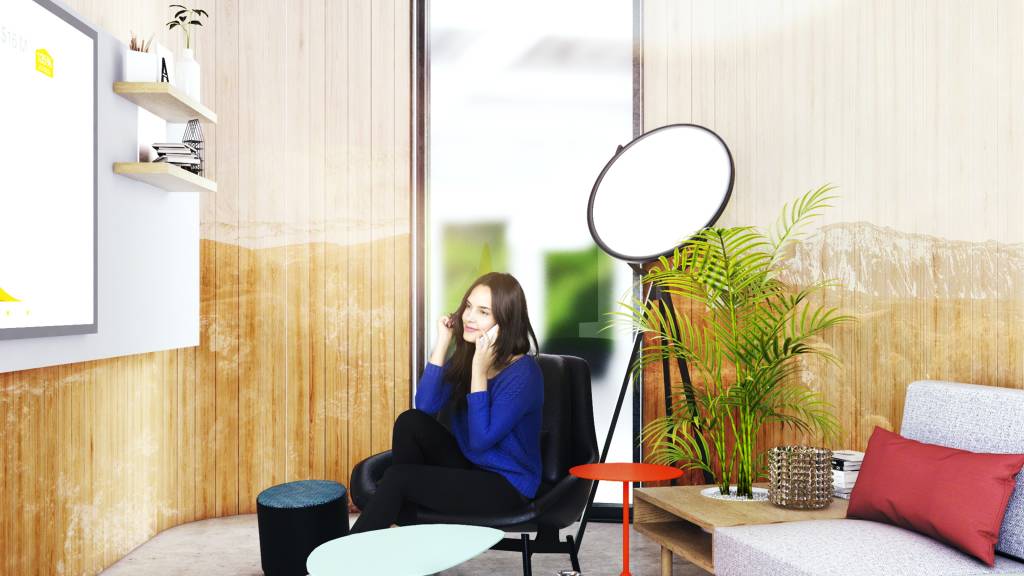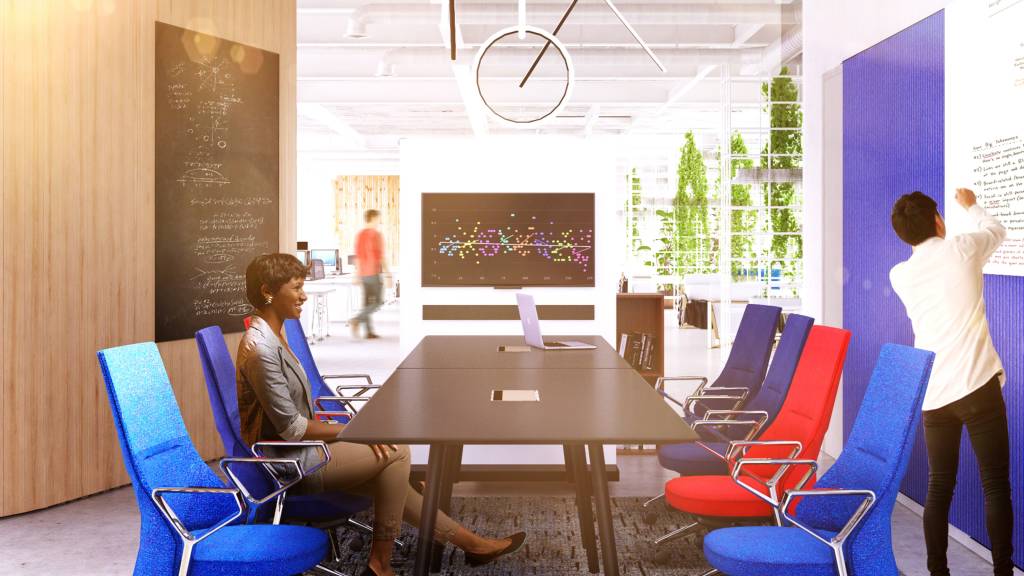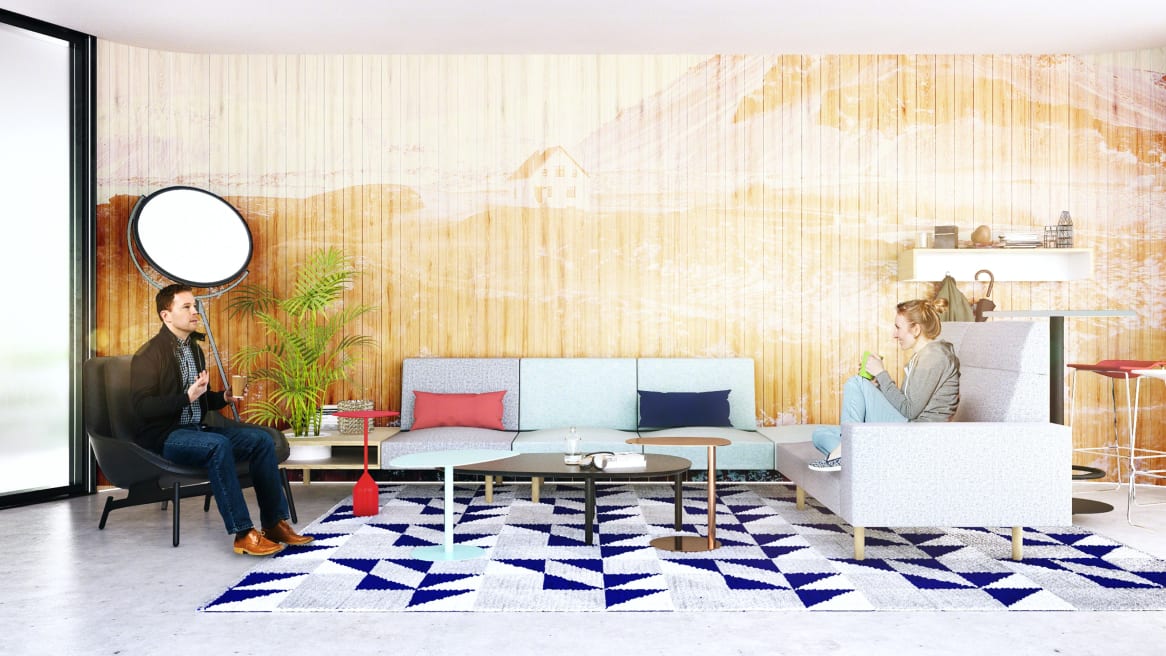Be Agile. Hack Your Space.
The Commons, The Nexus and Retreat
02 The Commons
How do you help leaders, customers and other colleagues understand what’s on your plate now and what’s next? Instead of scheduling an update meeting, DeVries’ team found vertical real estate in a prominent location could do the heavy lifting. Designers took this concept and turned it into a space that could connect someone outside of IT to what the teams are working on quickly. It hosts a summarized view of all team activity which helps manage customers’ and leaders’ expectations.

Central, larger enclosed spaces allow for bigger customer or team gatherings as well as the inclusion of global, distributed team members. Large-scale technology helps ensure distributed team members or stakeholders can participate fully.
03 The Nexus
The Nexus provides individual and group meeting spaces to connect IT with other departments throughout the business. In addition, spaces have been designed to support dyadic work. For software developers, routine individual or paired programming likely happens in the Agile Studio. But, other times, two people need to work together without disturbing their colleagues. A private space for paired work helps build knowledge within the team and avoid bottlenecks and silos. These spaces were designed specifically for IT work where one person uses a computer to walk someone through a project or program code while another person provides feedback or narrates. The spaces can also be used for mentoring, editing shared work and paired problem-solving.

04 The Retreat
Especially because IT teams spend so much of their time with technology, they find themselves seeking moments in the day to take a break or connect with others. The final design took these cues and added rejuvenation spaces, which provide a counterbalance to the technology that consumes so much of their focus. Individual spaces let introverts step away from their team when they need some time away. Quiet isolation helps them re-center and think more deeply without distractions. Social spaces help extroverts recharge. Connecting with others lets them approach problems in new ways.
NEXT CHAPTER — Exploring Agile with Your Teams
PREVIOUS CHAPTER — The Neighborhood


